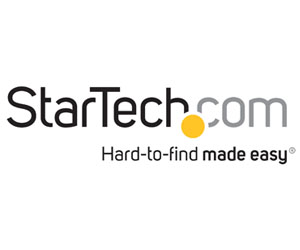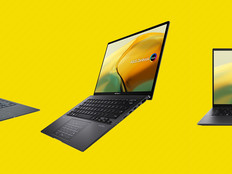BIZTECH: Why should businesses upgrade to Thunderbolt 4?
GANDHI: As businesses migrate to their newest computer solutions based on 11th- or 12th-generation Intel Core processors, those platforms are likely to include Thunderbolt 4 because the solution is integrated in the latest Intel platforms. These new Thunderbolt 4-based PCs will work great with both Thunderbolt 3 and Thunderbolt 4 accessories, and businesses can choose the accessory that best fits their needs.
For IT professionals, Thunderbolt 4 means they can introduce a new technology with full confidence and clarity on its capabilities. Through an increase in minimum required performance standards, mandatory certifications, USB4 compatibility and new productivity-enhancing accessories, Thunderbolt 4 reduces compatibility confusion and inconsistencies. It provides buyers with confidence that their Thunderbolt devices and accessories will deliver to full performance.
Thunderbolt-equipped laptops provide businesses with a one-size-fits-all solution they can roll out across their organizations. Laptops equipped with Thunderbolt 4 provide access to several protocols, including DisplayPort 1.4, PCIe 4.0 and USB4 — all while remaining thin, lightweight and perfect for traveling between home and the office. This allows your IT team to design custom workstations that meet the changing demands of employees and your organization, including for:
- Content creators who need high-resolution displays and 32Gbps PCIe for the fastest data transfer speeds to and from the high-capacity storage that is now common on 4K and 8K video cameras, 360-degree drone cameras and SLR cameras that exceed 100MP
- Engineers who require high-resolution dual-4K displays to create 3D CAD models, PCB schematics, software code, etc.
- Productivity users who need access to high-performance docking stations and legacy USB peripherals
Thunderbolt 4 makes it possible for IT professionals to streamline their infrastructure and standardize their entire office on the same laptop, simplifying device rollouts, upgrades and troubleshooting.
MORE FROM BIZTECH: Explore the tech trends businesses should look for in 2022.
BIZTECH: Should businesses consider waiting until the next generation of Thunderbolt is released before upgrading?
GANDHI: Thunderbolt 4 laptops are already hitting the shelves, with many built and designed on the new Intel platform. Thunderbolt is now integrated into Intel processors — in fact, it is found on 90 percent of 11th-generation Core business-class laptops.
The 12th-generation Core processors that were just announced at CES 2022 also have Thunderbolt 4 integrated. Thunderbolt 4 is required on Intel Evo and Intel vPro-based laptops, which makes finding Thunderbolt computer ports easier than ever.
Promising users a “business-class performance,” Intel has been working with popular PC manufacturers, including HP, Dell and Lenovo, to co-engineer advanced laptops based on the Intel vPro platform. These laptops will feature 11th- or 12th-generation Intel Core processors, Intel graphics and Thunderbolt 4 to improve responsiveness, provide a longer battery life, increase hardware-based security, aid with remote management and enhance platform stability.
This is a good time for businesses to purchase Thunderbolt-based PCs and accessories. With the recent launch of Thunderbolt 4, they can get the latest simple, reliable, high-performance solutions for docks, cables, display adaptors and storage to pair with the latest computer solutions.
Brought to you by:













